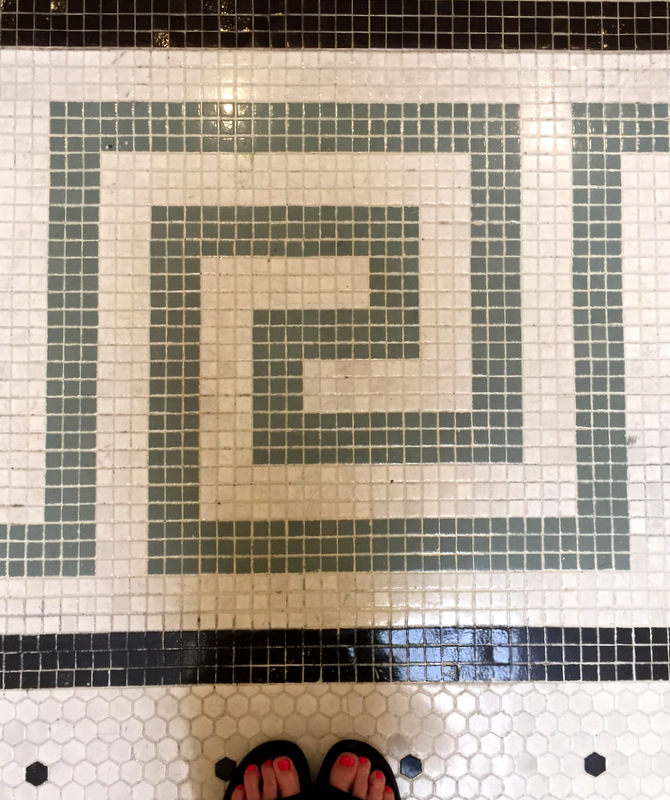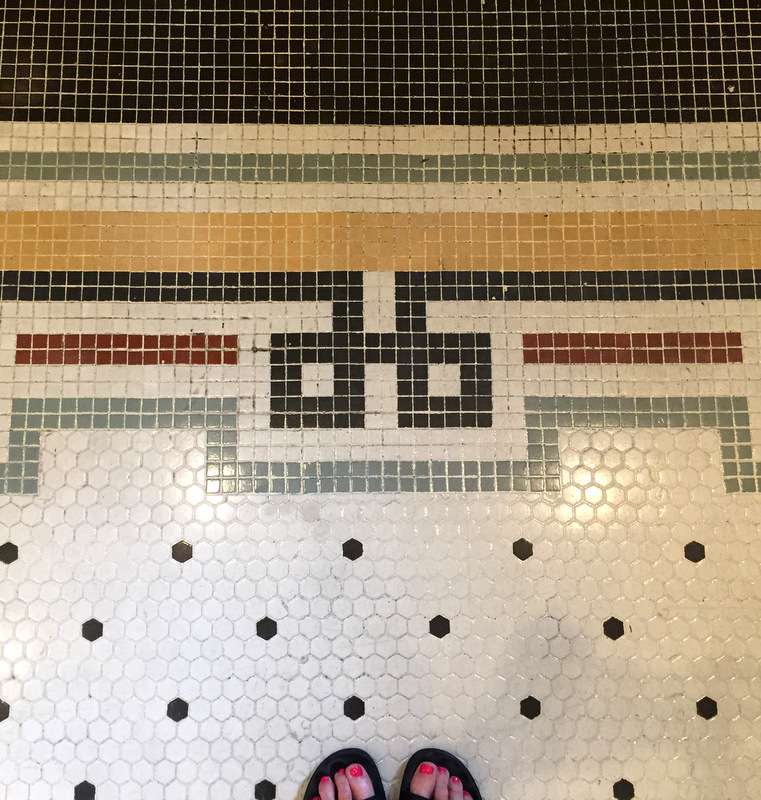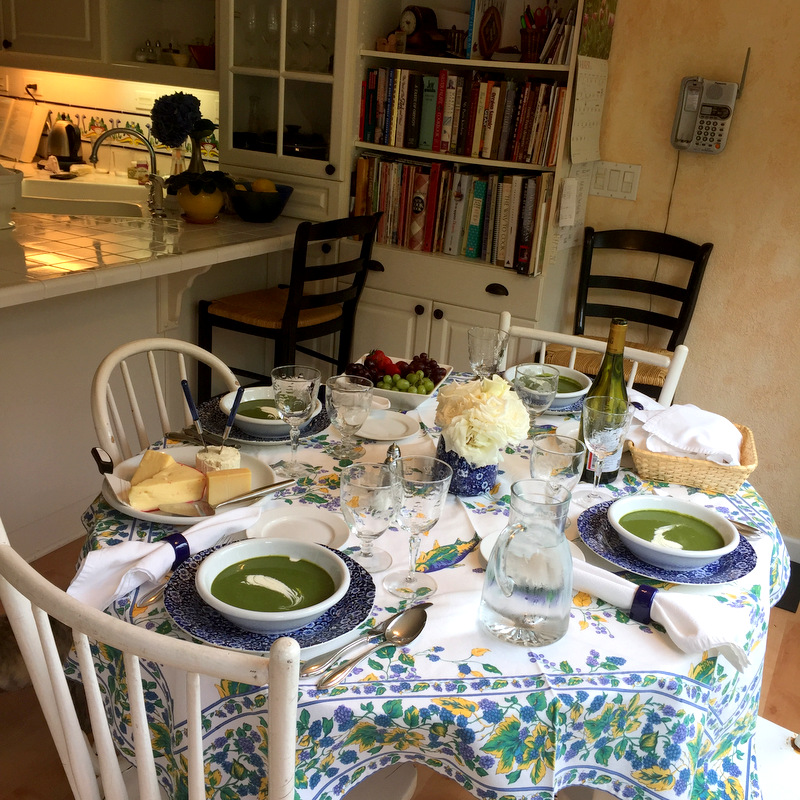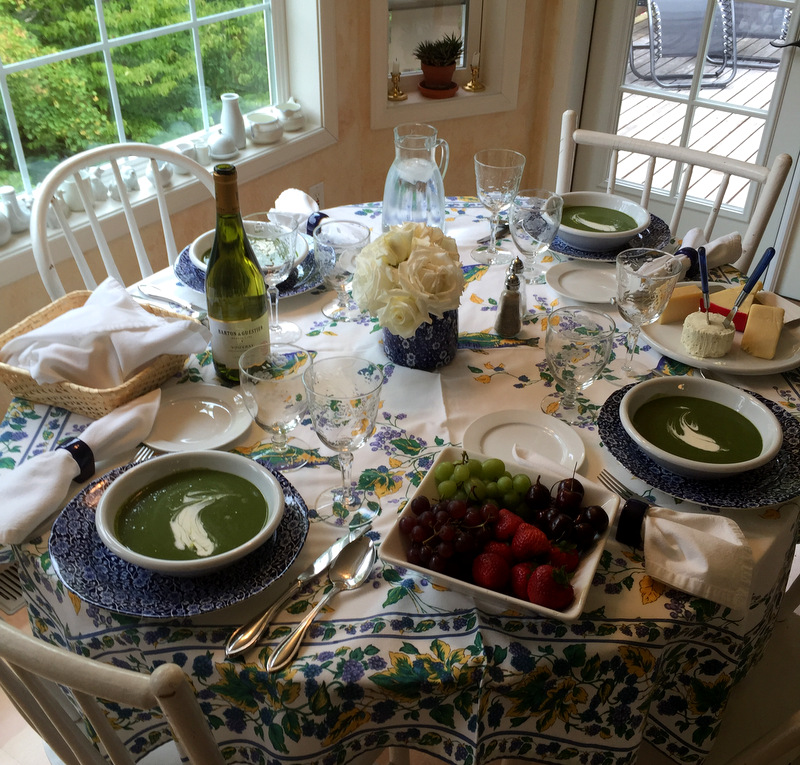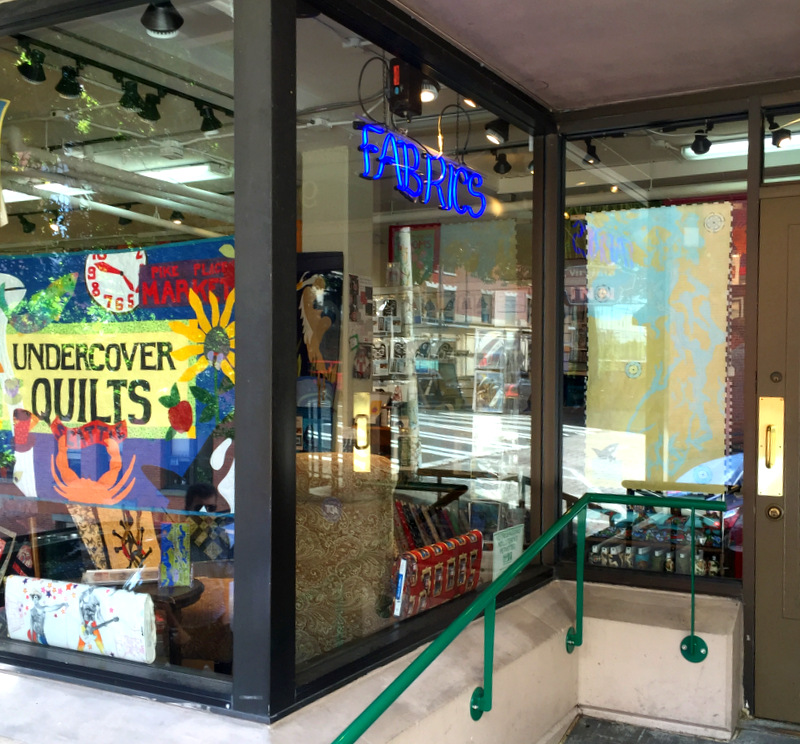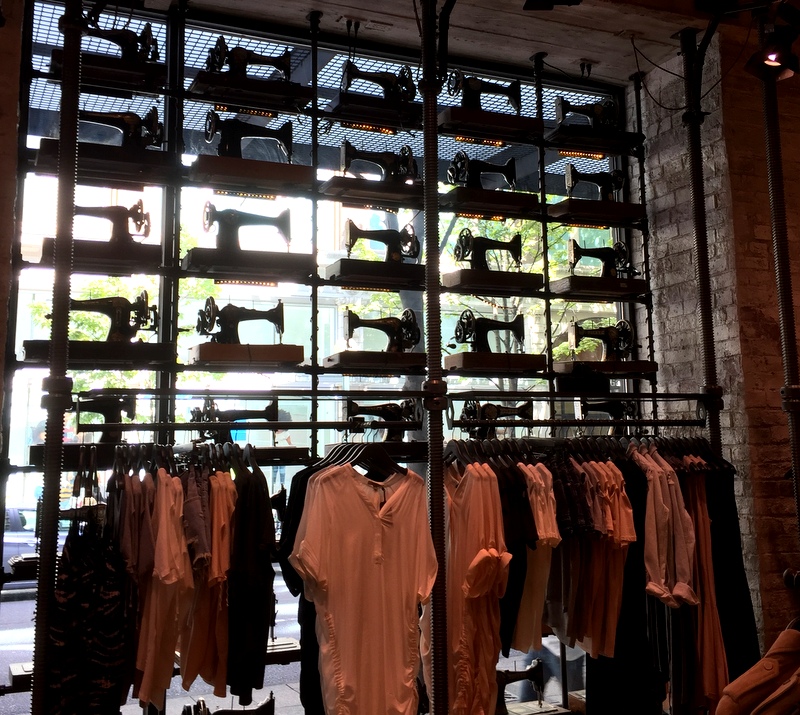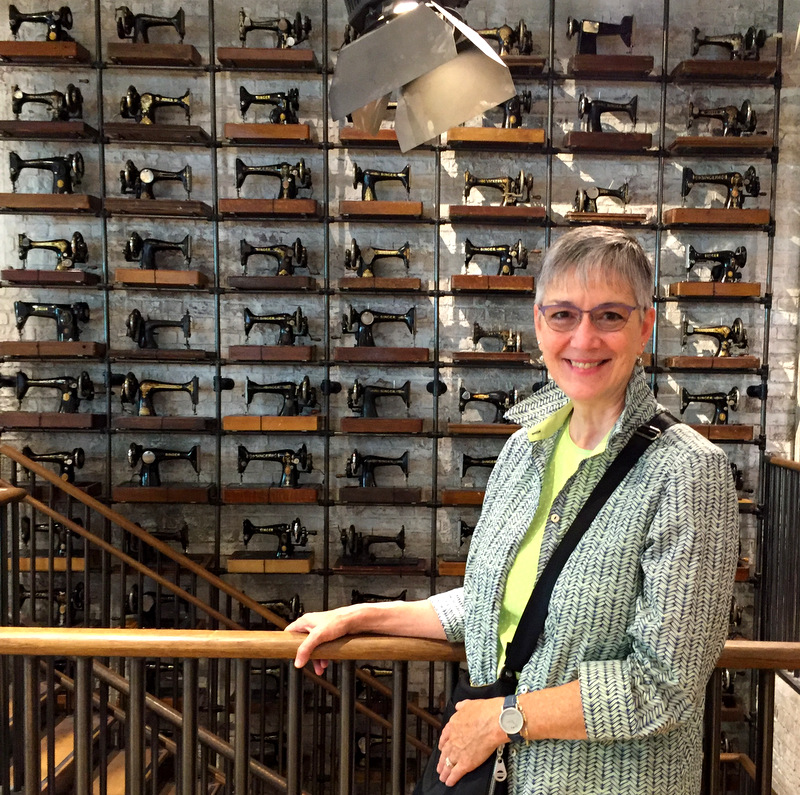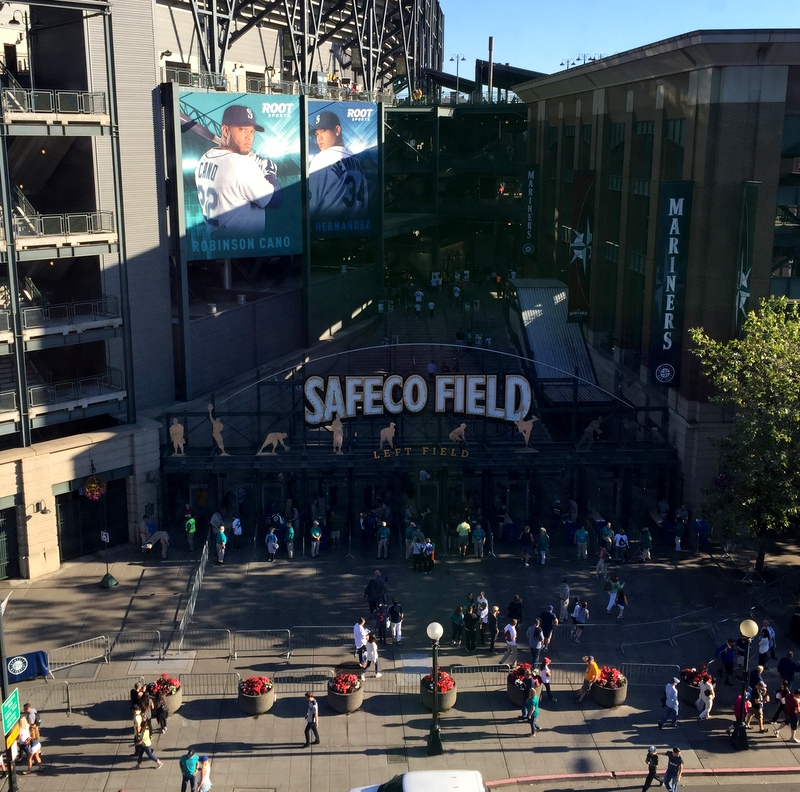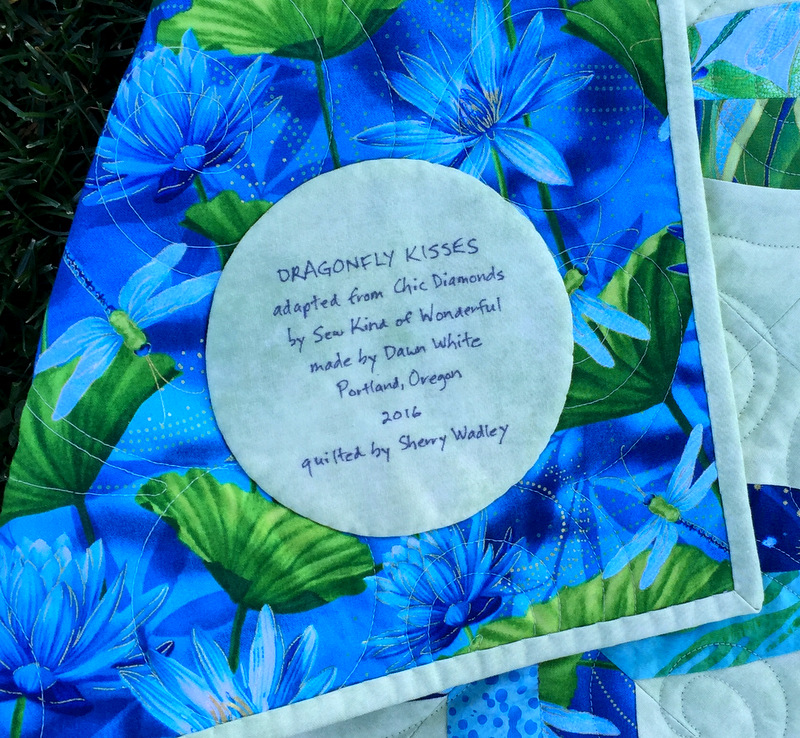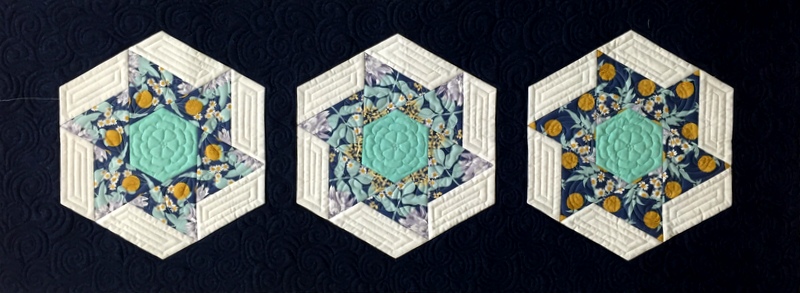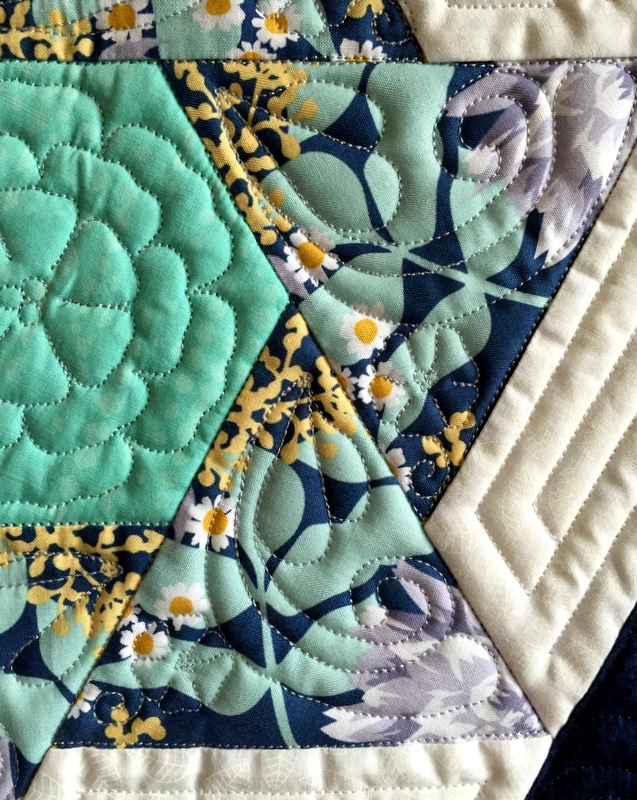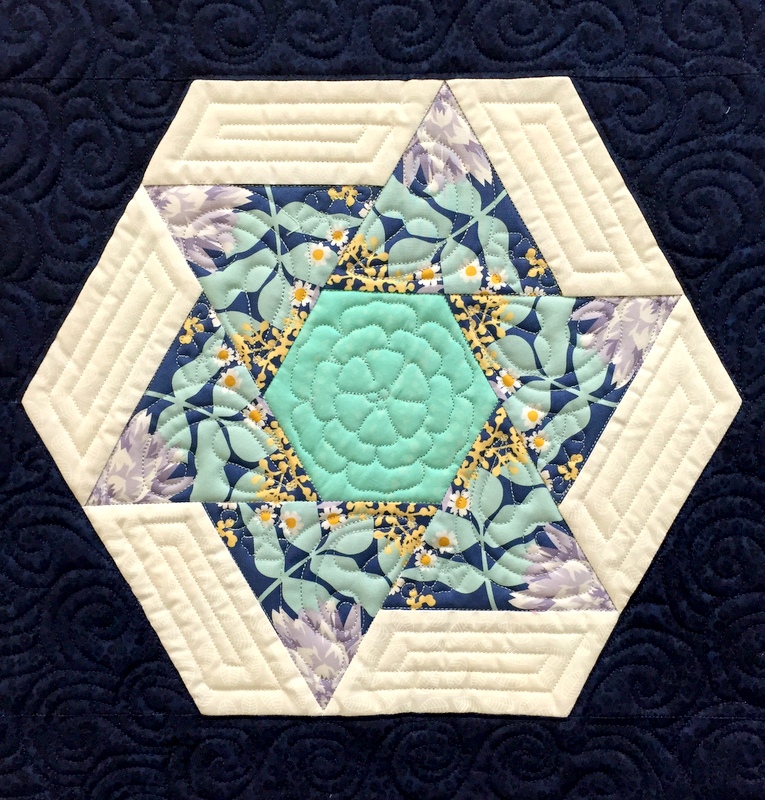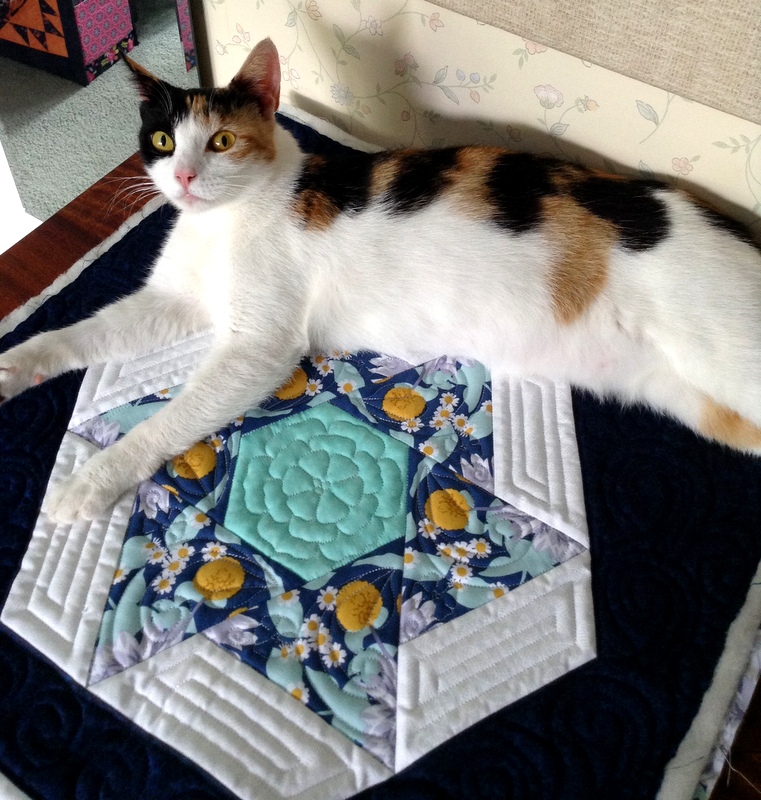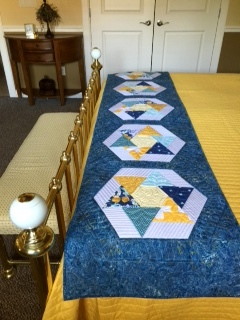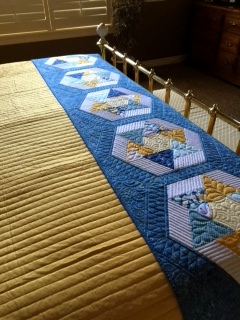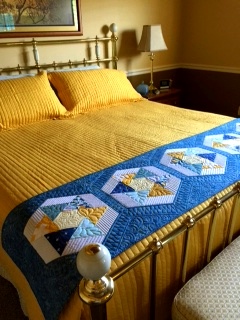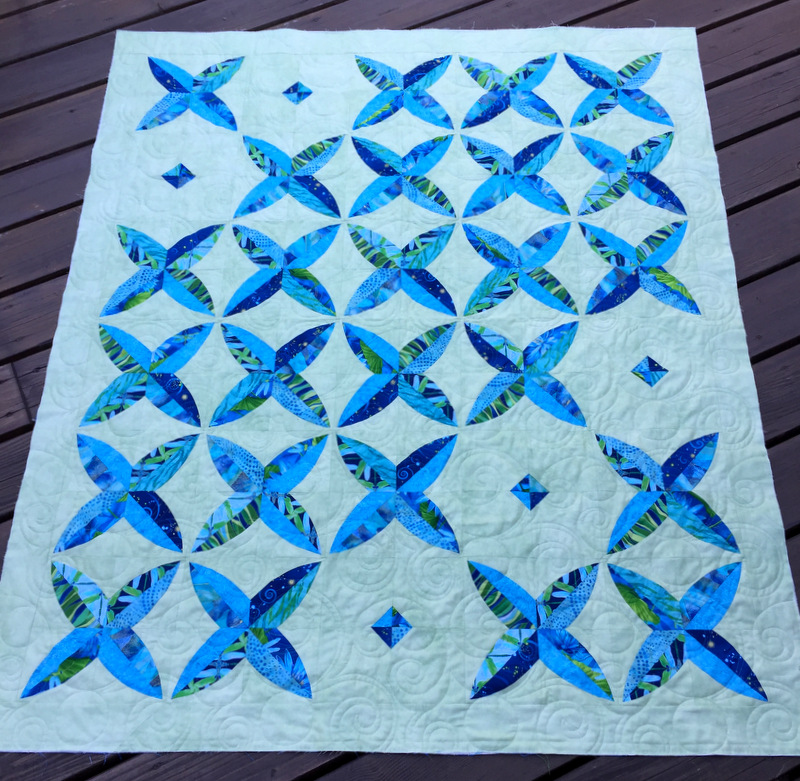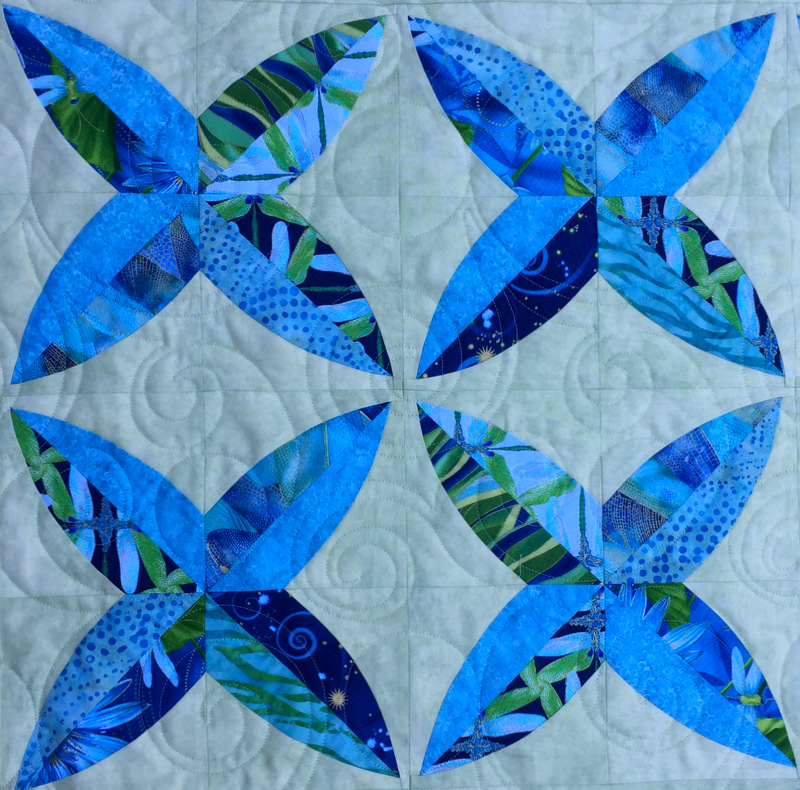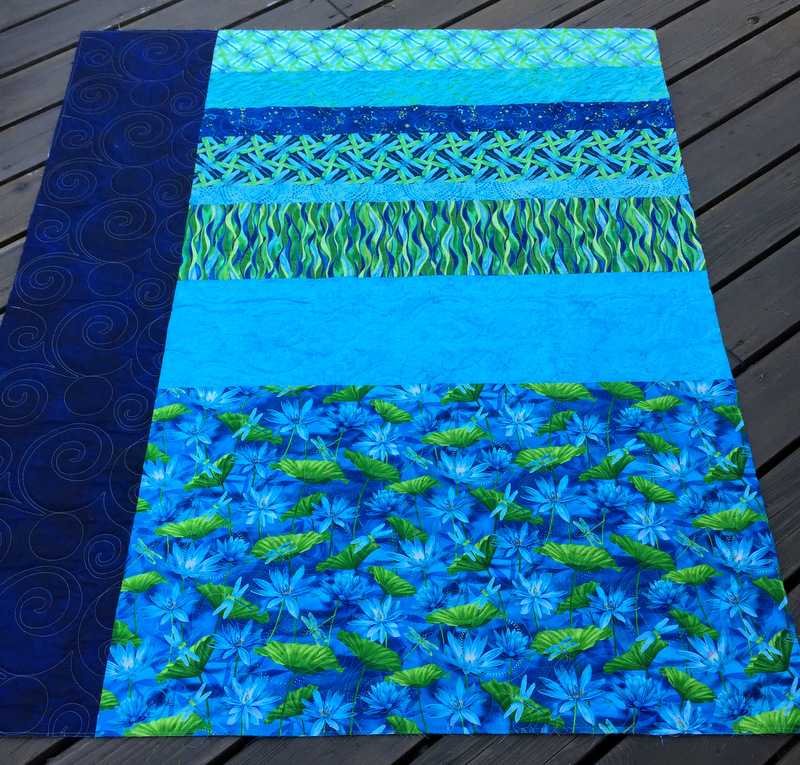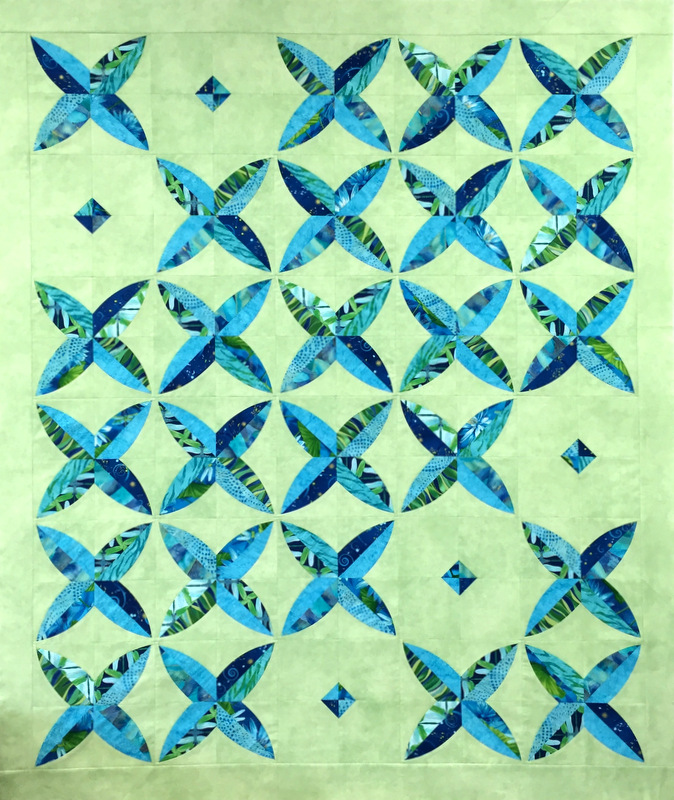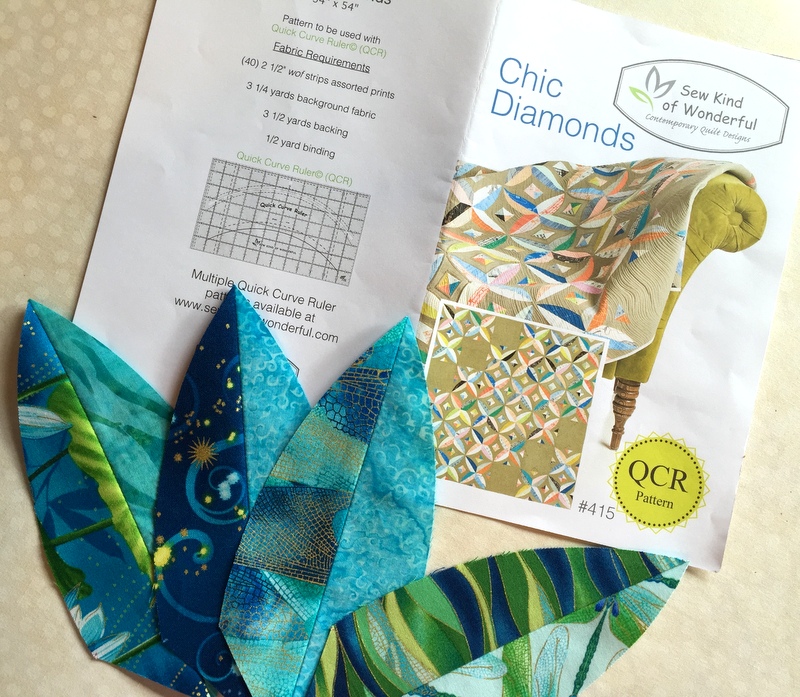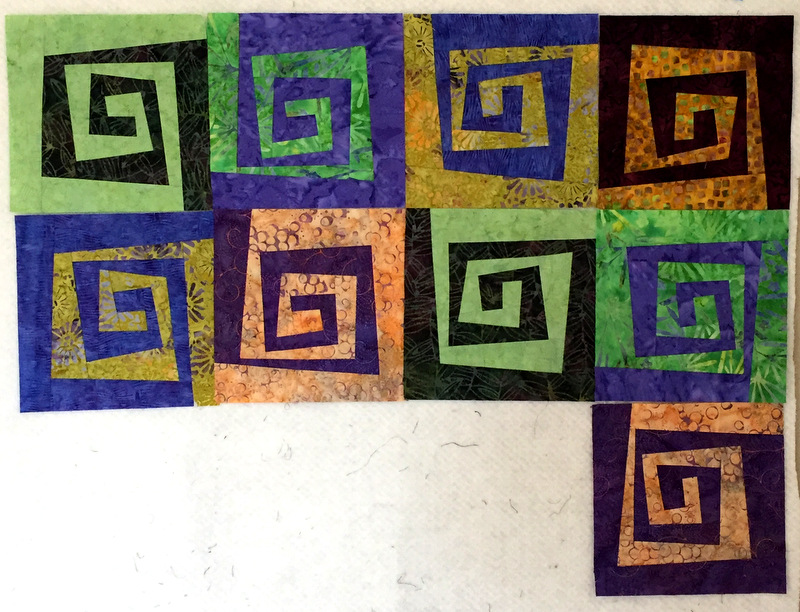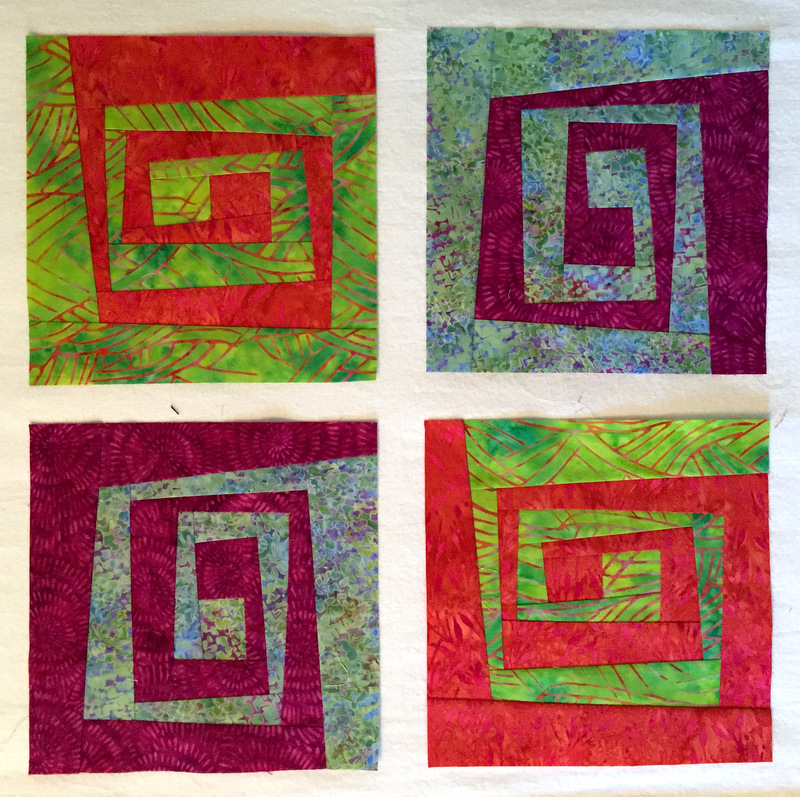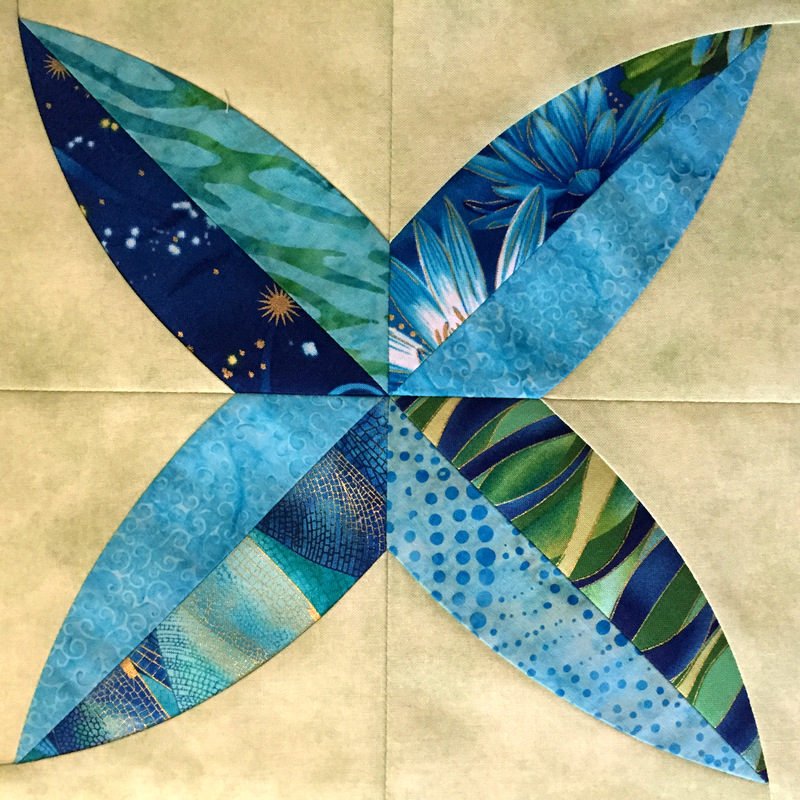If you’ve been quilting a while, you probably have a good-sized number of acrylic rulers on hand, the ones you use every day for cutting fabric and trimming blocks plus the specialty rulers you use on occasion. And let’s not forget the ones you bought (but maybe haven’t used yet) because they promised a faster, easier, more accurate way of cutting fabric or making a block.
With a few exceptions, these rulers tend to slip and slide on fabrics. How many of you have experienced a shift in position just as you were running your rotary cutter along a ruler’s edge? My hand is in the air.
Enter a product that may already be in your first aid kit or medicine cabinet. It’s a flexible clear 1″-wide surgical tape called Nexcare made by 3M. My friend and fellow quilter Kathy Anderson told me about it and now I’m passing the word on to all my friends who quilt.
Here’s what the package looks like. If you look carefully, you can see I have applied it to my go-to 4″ x 14″ Omnigrid ruler.

For years I used a product called Invisigrip on the back of my rulers. Made by Omnigrid, it’s a roll of clear film that comes attached to a paper backing. You cut it into strips, peel the paper backing away, and apply the film to the back of rulers. Invisigrip works very well at keeping rulers from sliding on fabric but it does have a couple of disadvantages.
First, the film can loosen from the back of the ruler over time and need replacing. Second, after a package has been open a while, it becomes stale. That is, it becomes impossible to separate the film from the paper backing, rendering the rest of the roll unusable. I tried sealing the roll in a Ziploc bag between applications but it still got stale.
I found myself buying a new package almost every time I got a new ruler. Over the years I have spent a fair amount of money on this product. NexCare tape is much less expensive — I think I paid around $4.50 for this double-roll package containing 20 yards — and it is very easy to apply.
All you have to do is unroll the length of tape you need, cut it with scissors, and apply it to the back of the ruler. But, being a bit of a neatnik when it comes to my sewing tools, I like to use my rotary cutter to cut straight lines so the tape lines up with the lines on my rulers. In the photos below I’m putting it on the back of a specialty ruler that I use a lot, the Quick Curve Ruler.
I place the ruler wrong side up on my cutting mat. (I put the ruler on a piece of fabric here just so you can see the markings better.) Below the ruler I unroll a length of tape the same length as the ruler, following the marking lines on the cutting mat, and press the tape onto the mat:
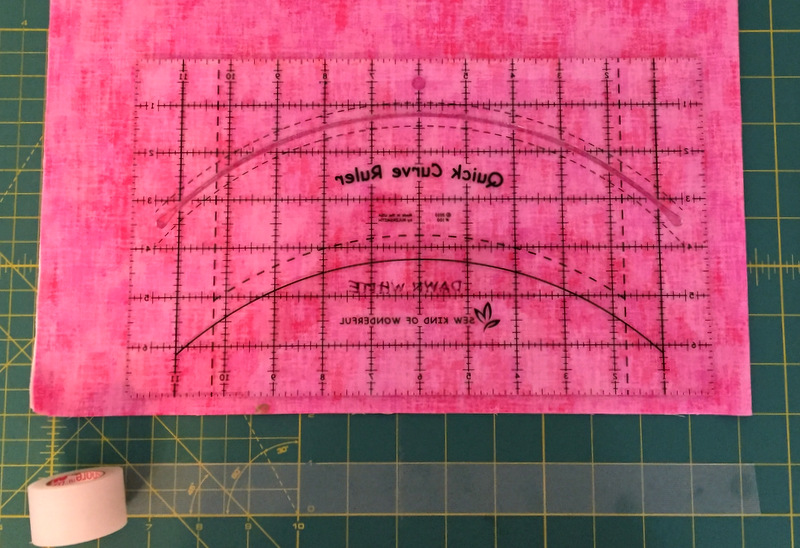
Next I trim the ends of the tape with my rotary cutter, allowing a ¼” margin between the end of the tape and the edges of the ruler. I use a stiletto (a bamboo skewer, actually) to lift up the edges of the tape where it was trimmed . . .
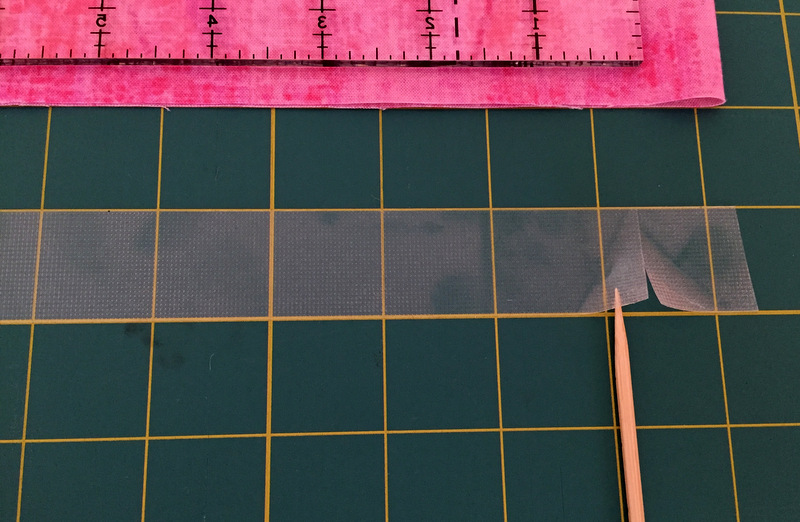
. . . and then peel the strip of tape off the mat.
Using the markings on the ruler itself as a guide, I lay the strip of tape on the ruler, positioning it a quarter of an inch from the edges, and press it in place with my fingertips. Here you can see that I added strips to the top of the ruler, leaving the area around the hanging hole clear, and added an extra stabilizing strip under the curve cut-out.
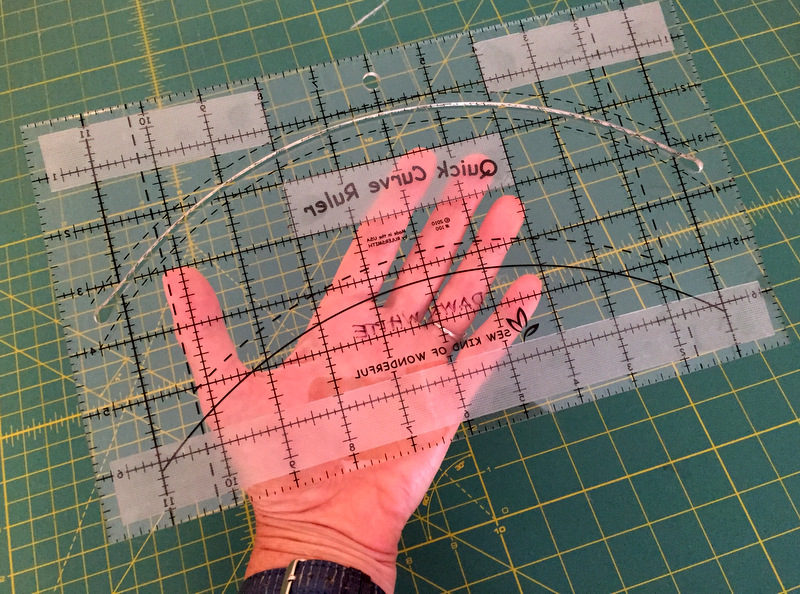
You can put strips around all four sides of the ruler if you wish. You can put them anywhere, for that matter. Because the cutting channel on the Quick Curve Ruler comes within a half-inch of the sides, I opted not to put strips there, adding the stabilizing strip in the center instead.
When I’m ready to use the ruler, I can see clearly through the tape:
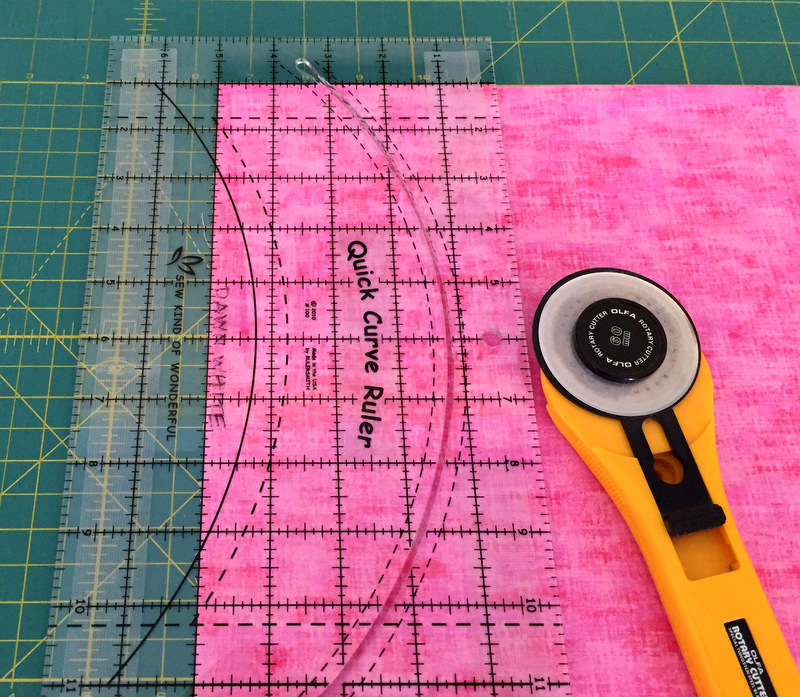
Pretty nifty, don’t you think?
Updated added June 21, 2019: Since posting this tutorial I have learned that Nexcare tape tears evenly because it has a slight grid embedded in it. If you want to avoid the steps of placing the tape on a mat and cutting it with a rotary cutter and if you’re not particular about the exact length of the piece that you are applying, simply tear off the amount you think you need and put it on the back of the ruler. Easy peasy.



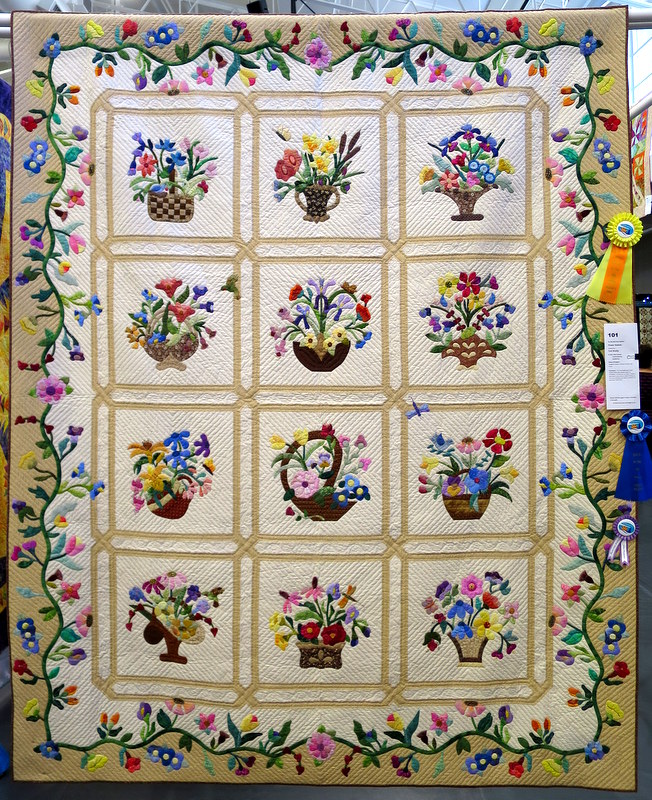
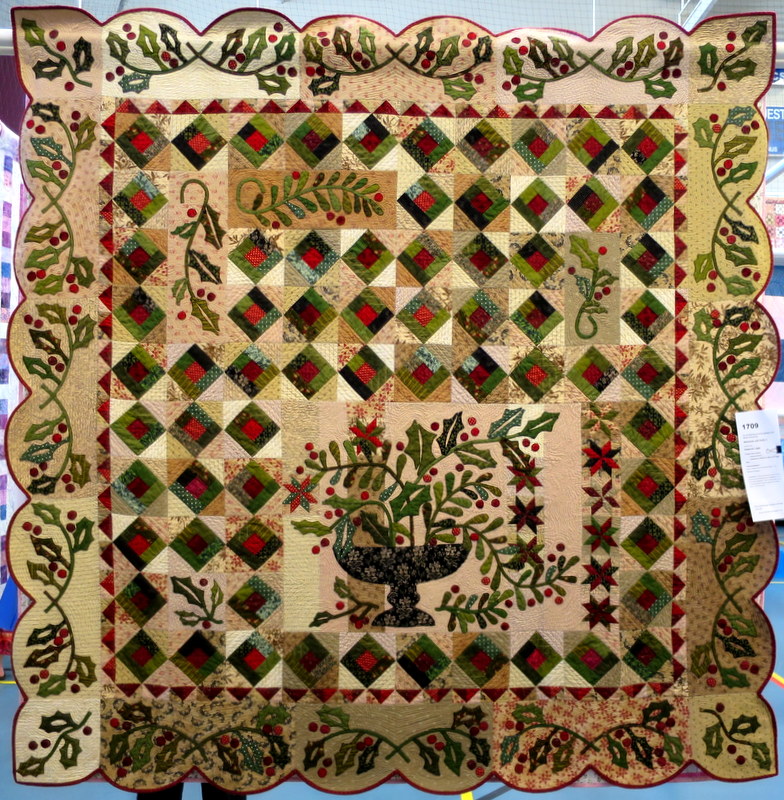 Deborah is one of my fellow Quisters (Quilt Sisters). She made this quilt as a gift for our friend Peggy, also a Quister, and then made a second version for herself — all in the space of one year!
Deborah is one of my fellow Quisters (Quilt Sisters). She made this quilt as a gift for our friend Peggy, also a Quister, and then made a second version for herself — all in the space of one year!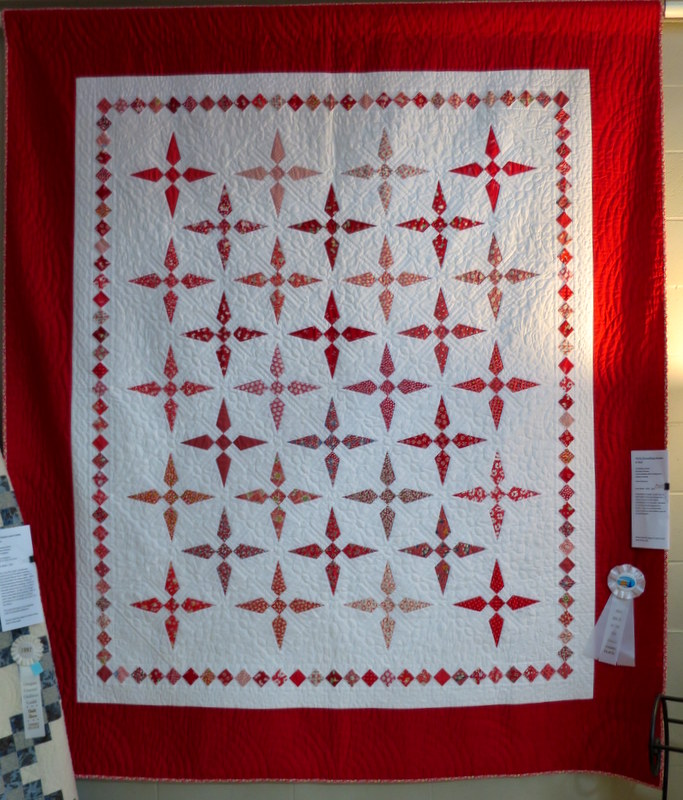
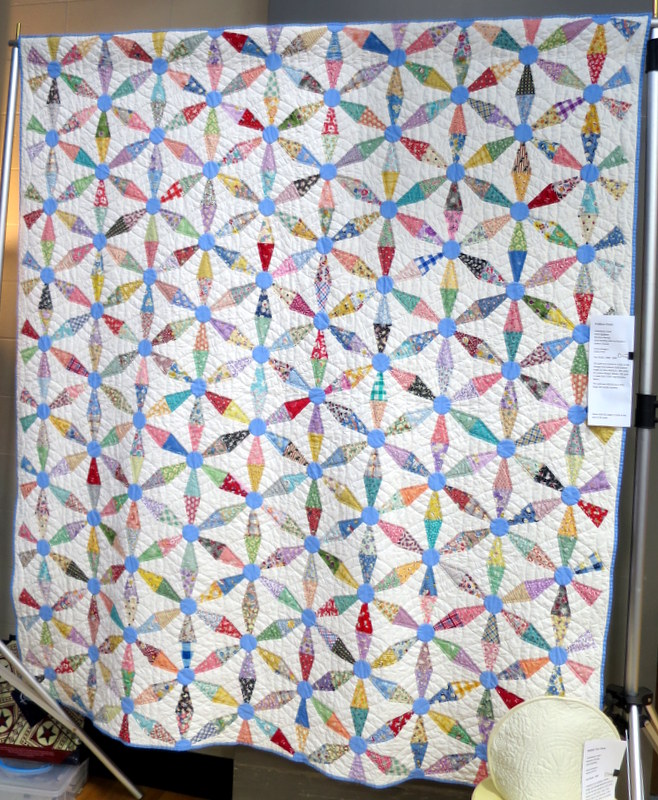
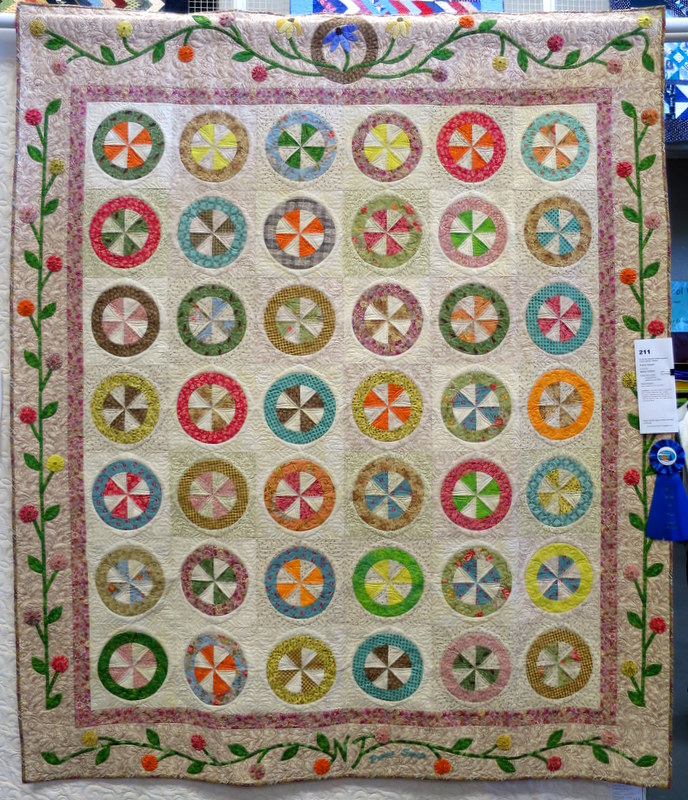

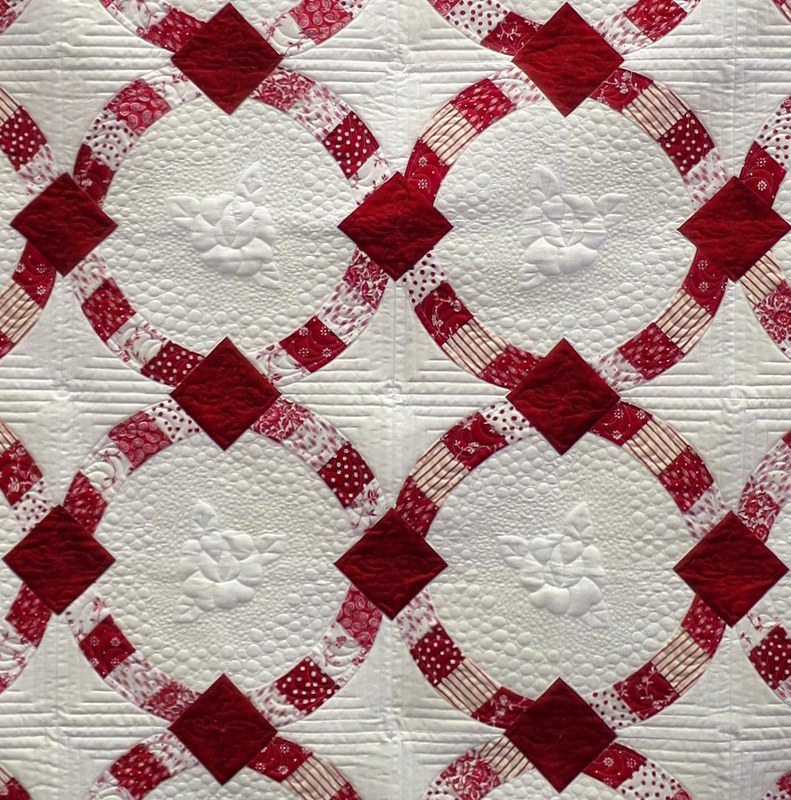

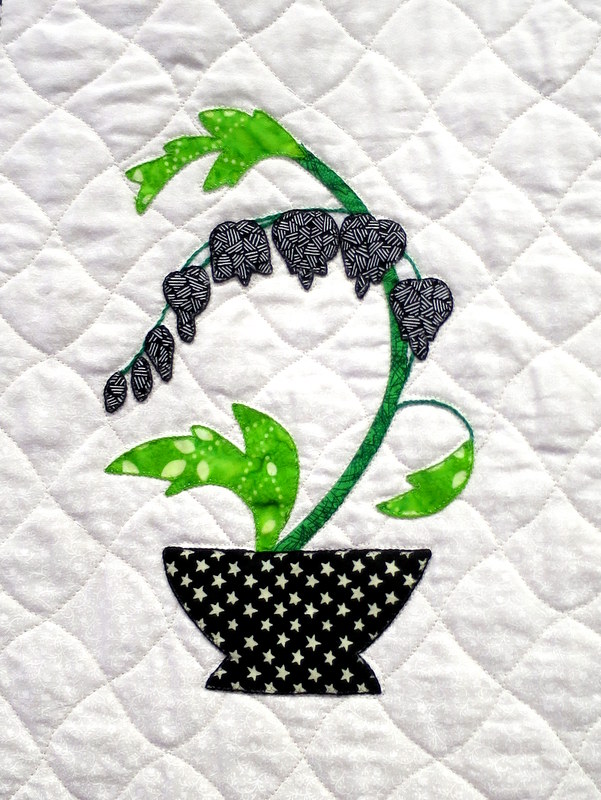
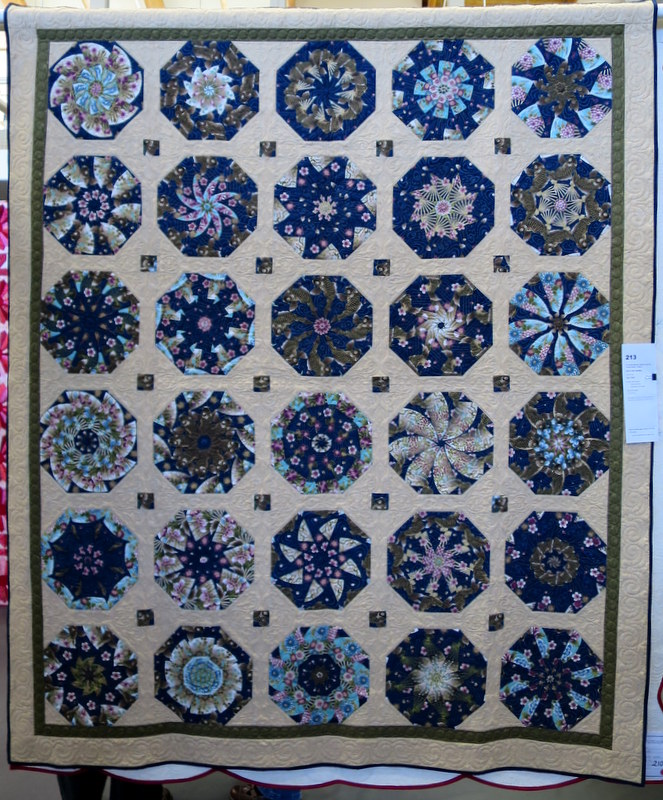
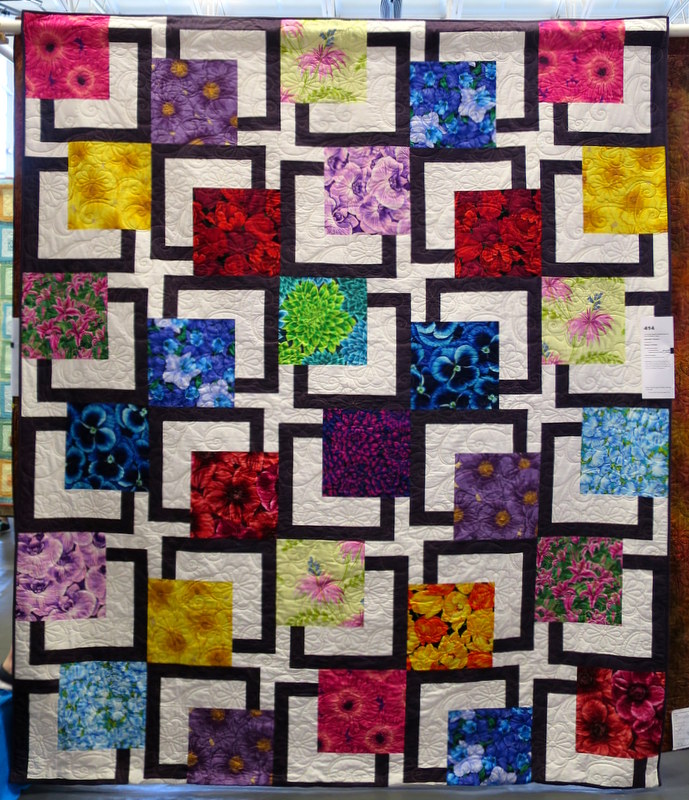
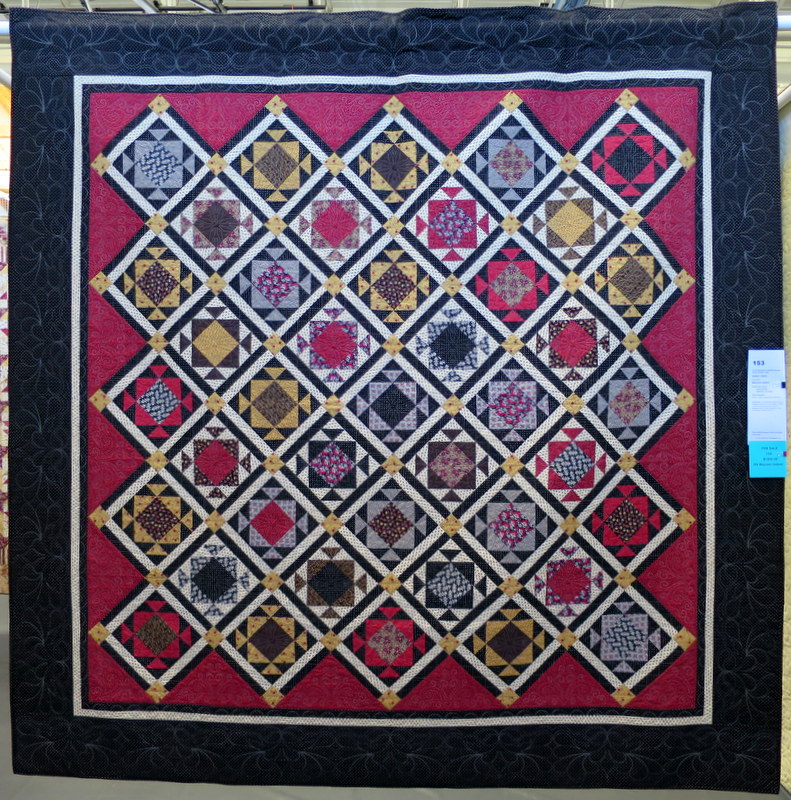
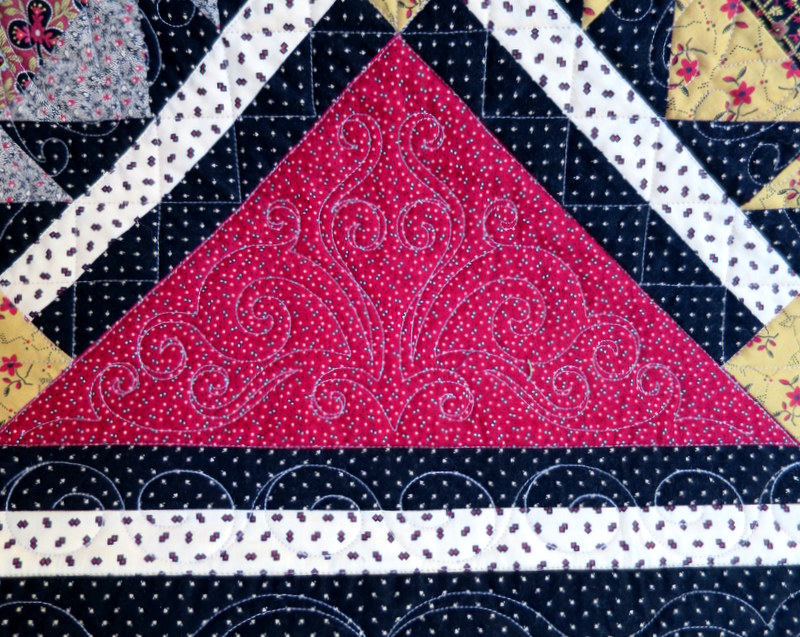
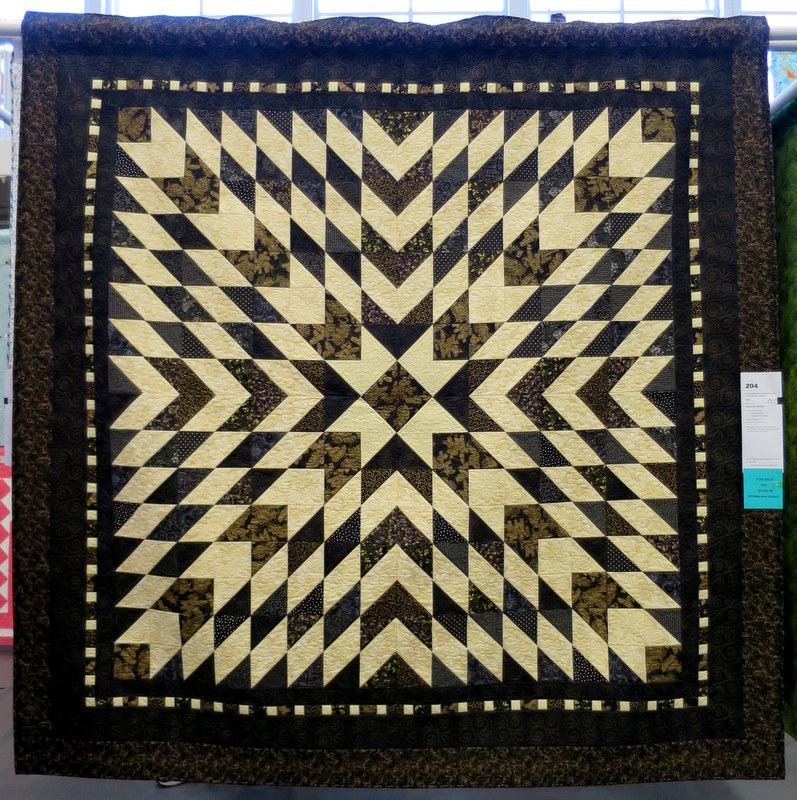
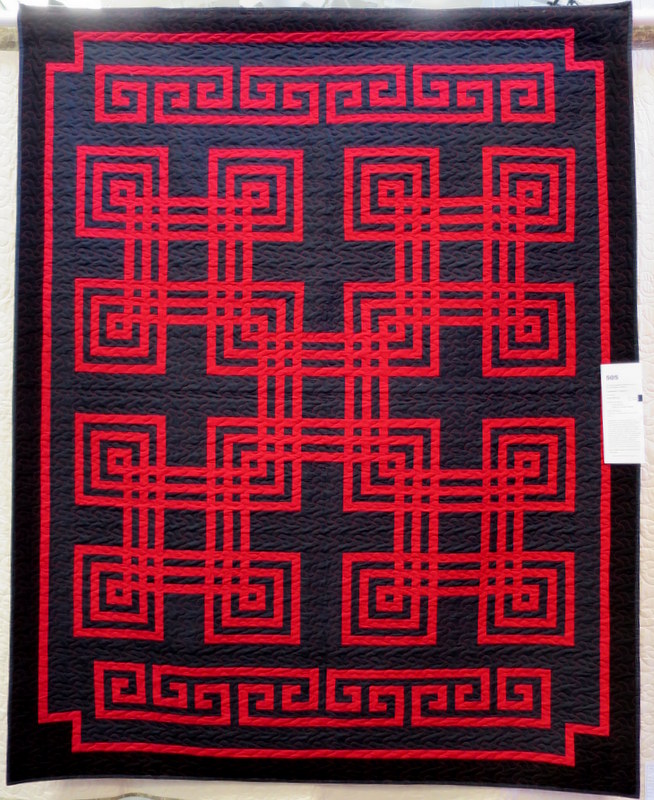
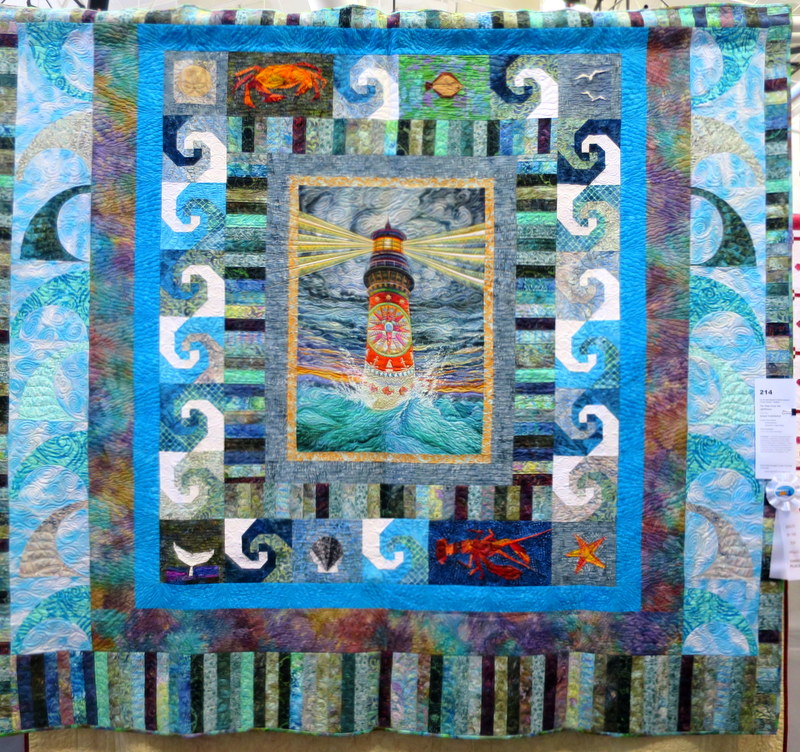 Did you recognize the lighthouse in the center of the quilt? It’s the same panel by Dennis McGregor used in the Oregon Coastal Quilters Guild’s raffle quilt. The original painting was commissioned by the guild for its 25th anniversary show last year.
Did you recognize the lighthouse in the center of the quilt? It’s the same panel by Dennis McGregor used in the Oregon Coastal Quilters Guild’s raffle quilt. The original painting was commissioned by the guild for its 25th anniversary show last year.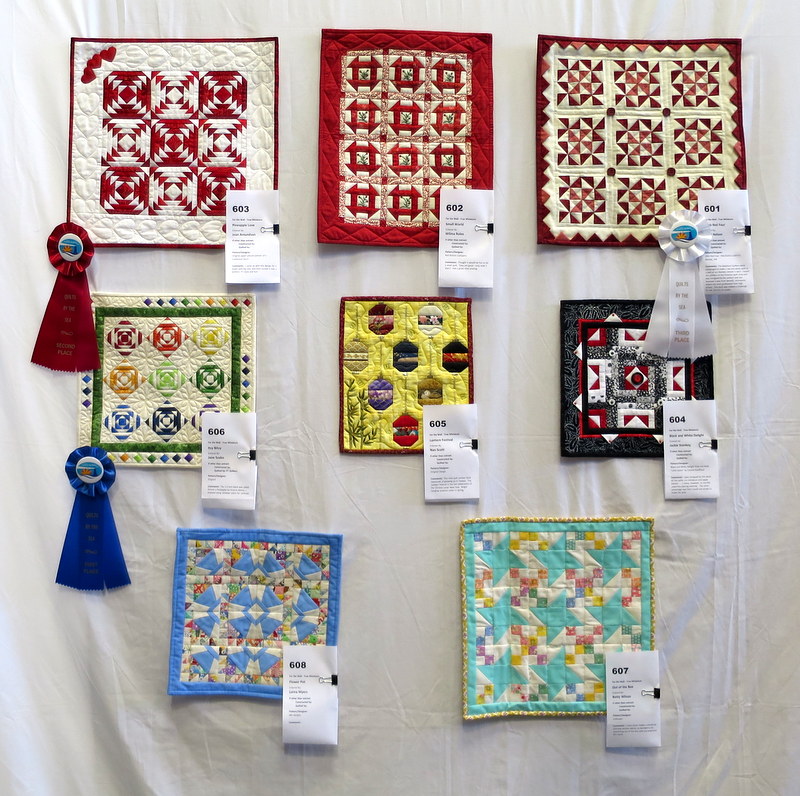
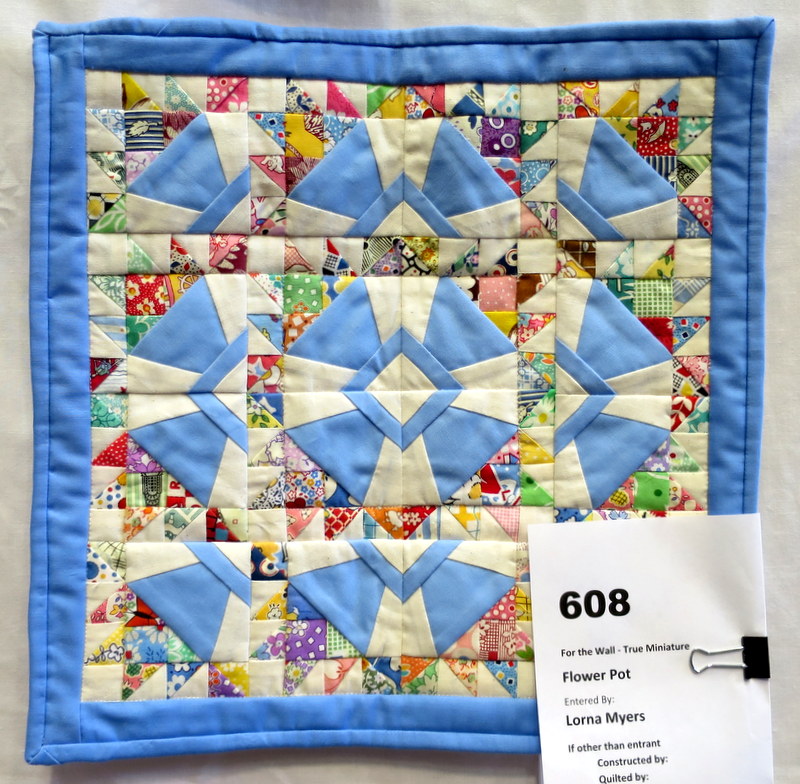
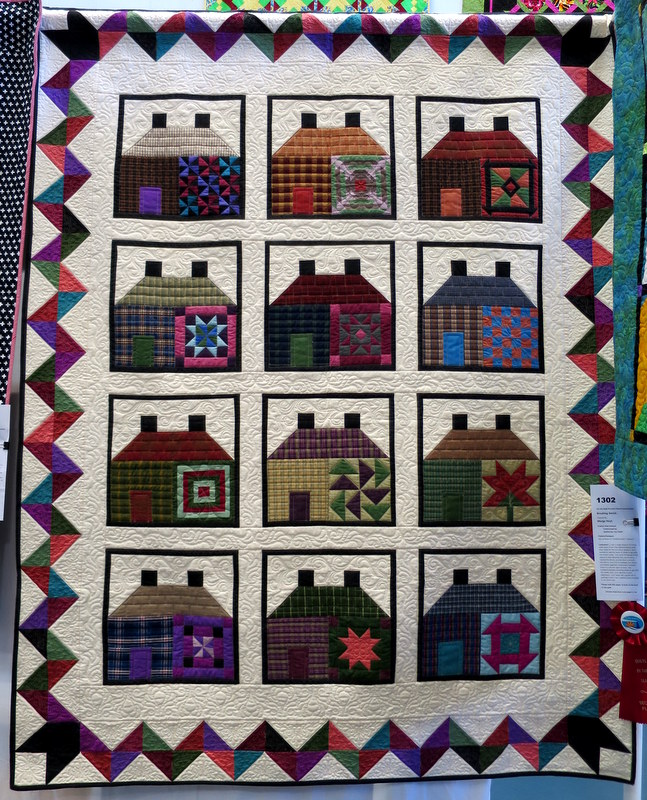
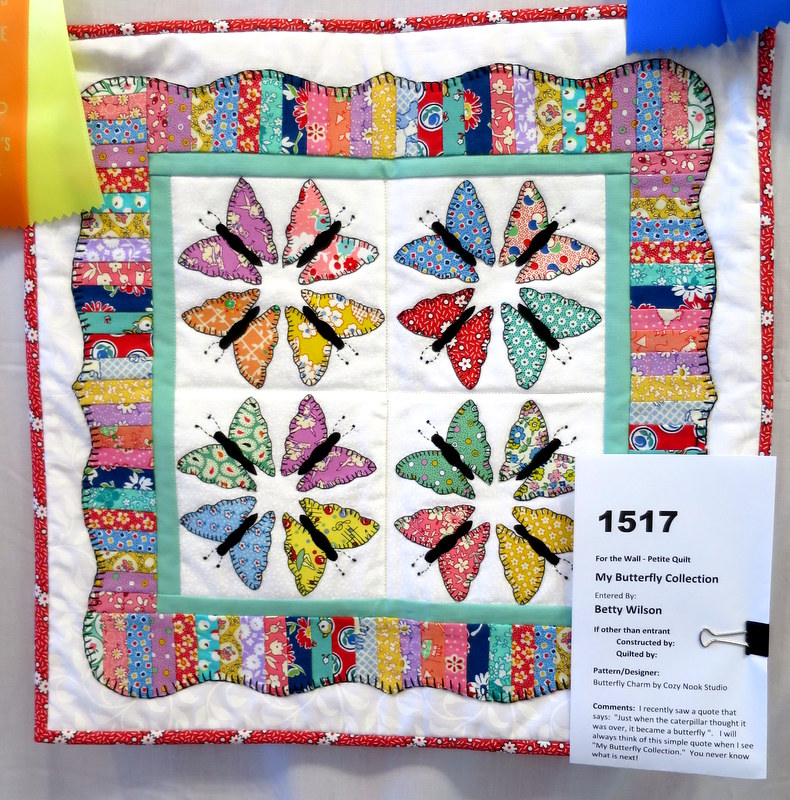
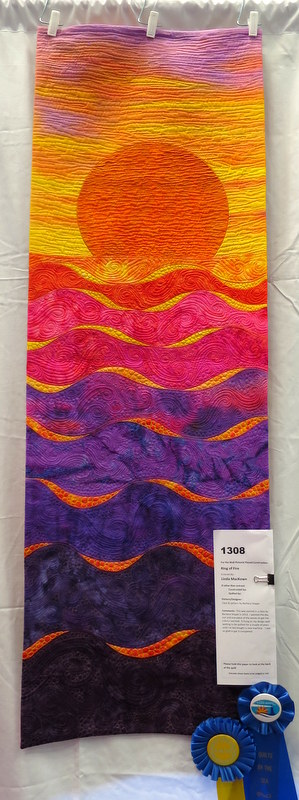
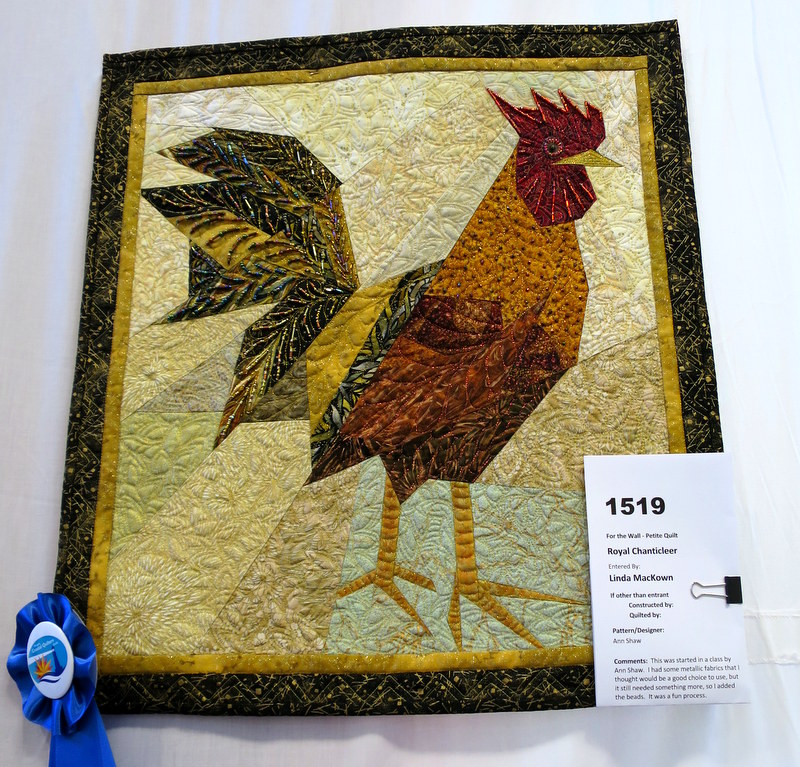

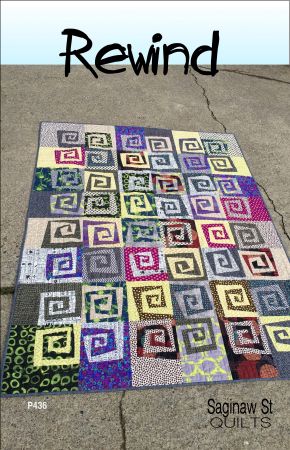
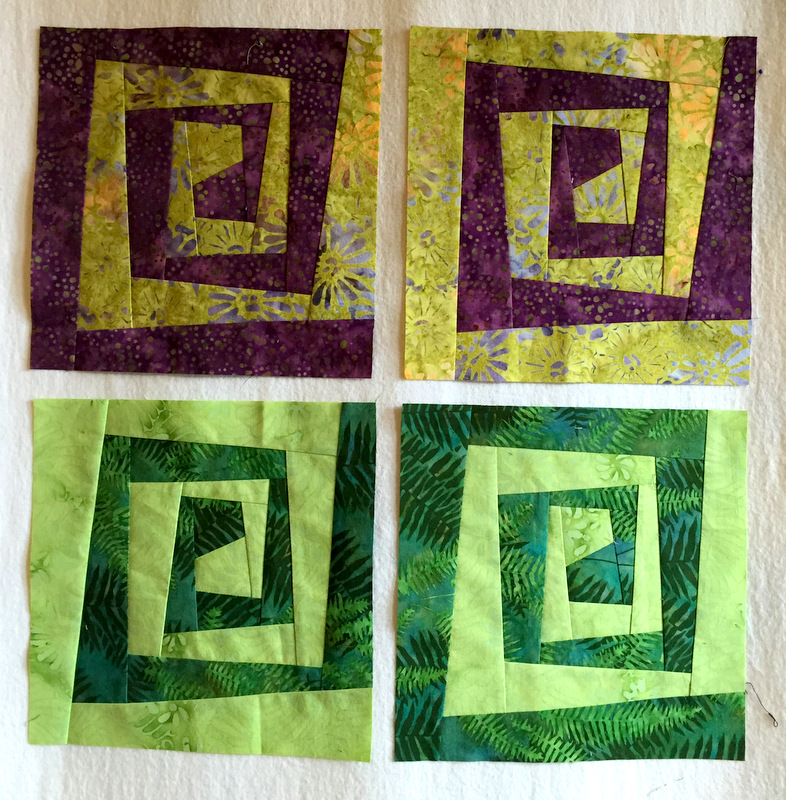
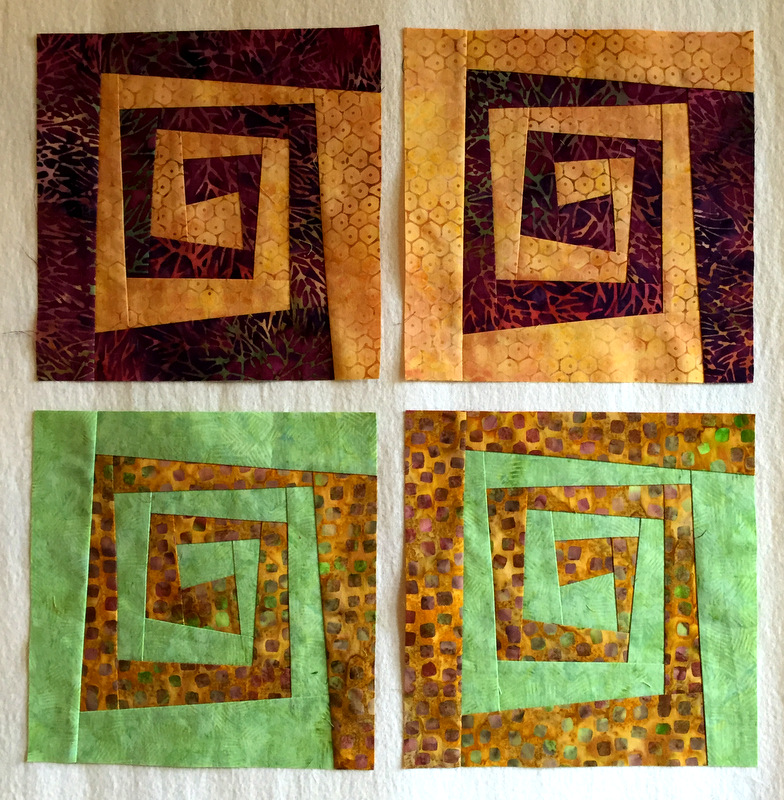
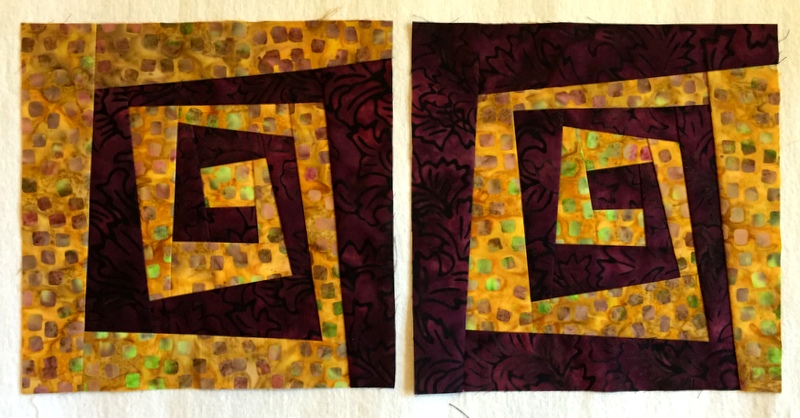
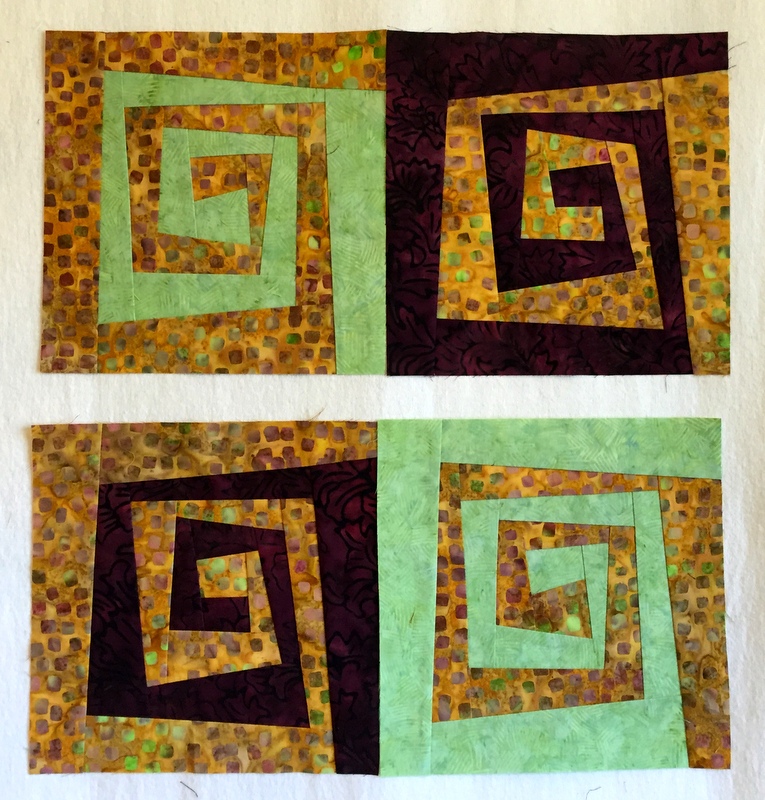

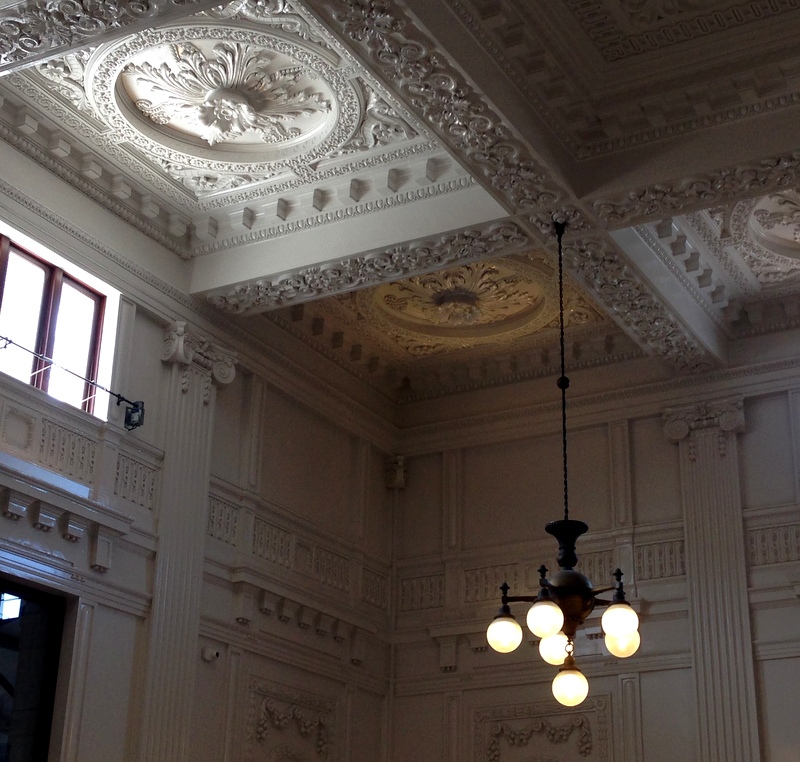

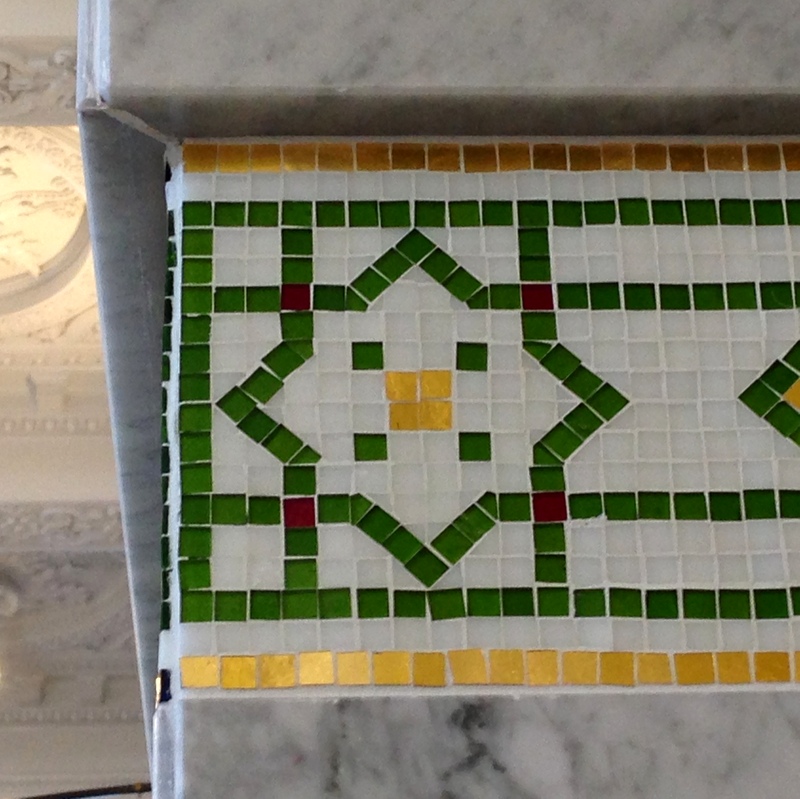 If the design shows up on a quilt of mine, you’ll know where I got the inspiration.
If the design shows up on a quilt of mine, you’ll know where I got the inspiration.
